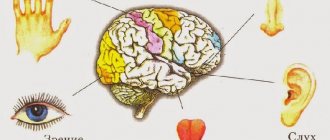Definition of the concept
Called temperamentum in Latin, it is a combination of individual characteristics that characterize the sensory (affective) and dynamic spheres of his higher nervous activity (that is, comprehension, emotional reactions and behavior). This is a certain psychological foundation on the basis of which an individual develops and which determines a number of social properties of the psyche that contribute to the adaptation of people in society.
Historical reference
There was talk about temperament back in the 5th century BC. But only in the 18th century this issue was approached from a psychological point of view, having identified a number of stable qualities that are given to an individual by nature and directly affect his mental activity.
Teachings of Hippocrates
The founder of ideas about the innate characteristics of a person is considered to be this ancient Greek thinker and healer, who divided people into four substances predominant in the body: black and yellow bile, phlegm (mucus), blood. His follower was Claudius Galen, who listed the main types of temperament based on physiological differences.
Other concepts in the diagram
Over time, many researchers arose who devoted their work to the study of temperament.
Our days
There are 3 fields of psychophysical activity that are influenced by a person’s innate character traits:
- The level of overall intensity of interaction between the individual and the world. It can manifest itself in lethargy and passivity, excessive energy, or occupy an intermediate position between these extremes.
- Mobility. It is expressed in the speed and sharpness of movements and phrases. Accordingly, in this path people are divided into fast and slow.
- Emotionality. It is related to how often an individual’s emotional state changes, how susceptible and vulnerable he is.
Depends on temperamental characteristics
- The pace of work and the rhythm of life.
- The power of emotions, will, the ability to take control of psychological processes.
- Speed of perception, concentration, thinking.
- Discipline and self-discipline.
- Extroversion and introversion.
Doesn't belong to temperament type
- Character. It can change as we grow older, socially interact, and develop habits.
- Capabilities. This concept refers to how deeply, quickly and easily an individual masters new skills and knowledge and is not subject to natural behavioral characteristics.
Individual traits that are not subject to change are the basis for the development of human qualities and attitudes. These are peculiar superstructures that determine the methods of communication and behavior of an individual, but do not in any way affect whether a child grows up capable or not. However, knowing what traits predominate in this mental foundation of the baby, you can choose the most effective methods for his upbringing. As an adult, understanding which group you belong to will give you the opportunity to find effective tools and mechanisms for working on yourself.
Temperament and character
Temperament is the natural basis of personality, determined by the properties of the nervous system. Character is a set of stable individual mental properties that manifest themselves in all spheres of life. They are related to each other, but are not identical to each other. Temperament is a biological base, character is a superstructure formed in the process of development and education. Temperament determines the dynamic aspects of behavior (speed of reactions, speed of switching, impressionability, etc.), character - the internal content of this behavior, including:
- Attitude towards objects of the surrounding world
: carelessness or accuracy, stinginess or generosity, etc. - Attitude to one’s own activities
: hard work or laziness, perseverance or a tendency to quit halfway, the desire to achieve high results or satisfaction according to the principle “we’ve done it and that’s okay” without focusing on quality. - Attitude towards other people
: humanity or cruelty, responsiveness or indifference, etc. - Attitude towards oneself
: modesty or inflated self-esteem, self-criticism or lack of criticism, courage or timidity, ambition or lack of pretensions.
The dynamic implementation of the listed character qualities is determined by temperament and is difficult to correct. For example, a choleric person and a phlegmatic person can be equally generous, but the first will more often share something with people spontaneously, under the influence of an emotional impulse, and the second - after thinking and logical analysis of the situation. On the other hand, with the same dynamics of behavior, the attitude towards people and the direction of activity of a sanguine doctor and a sanguine criminal will be directly opposite.
The strength and weakness of people's characters do not depend on the strength or weakness of temperament. A melancholic person with a strong character, when choosing a profession taking into account personal characteristics, can achieve great success thanks to observation, compassion and high learning ability. A sanguine person with a weak character can waste himself on superficial communication and an endless change of specialties, none of which seems interesting enough to him.
People's characters have an enormous degree of freedom compared to temperament. They change naturally throughout life and can be corrected by making conscious efforts in a certain direction. At the same time, the potential for character development depends on temperament. Those traits that are inherent in a person by nature develop better.
A sanguine person can more easily master any interactions with people, even if they have shyness and low self-esteem. Because of his natural compassion, it is easier for a melancholic person to develop empathy, even if in childhood he was taught to treat people indifferently. Phlegmatic people are good at organization. Choleric – generation of non-standard ideas. But efforts directed contrary to natural inclinations bring little results. Especially if a person looks up to people with a different temperament.
Types of human temperament and their characteristics: comparative table of types
| Name | External signs | Features of speech | Specifics of communication |
| Choleric | Moving eyes, lips form a straight line, the gaze covers the entire space in which it is located. | Quick response to a question asked, as well as the overall pace of response. | In a conversation with several interlocutors, he strives to maintain eye contact with everyone and makes decisions hastily. |
| Sanguine | The corners of the mouth are raised upward, the angle of vision is wide. | Often switches from one topic to another, speaks fluently. | He tries to keep his gaze on each participant in the polylogue. |
| Phlegmatic | Looks as if deep into himself, the lip line is smooth and straight. | Slow, long pauses in conversation. | The gaze is directed only at the one to whom the phlegmatic person is directly addressing. |
| Melancholic | He looks more inward than at those around him, the corners of his lips are downturned. | The pace is average, there is uncertainty in the voice. | Maintains eye contact only with the person with whom he is currently speaking. |
Psychologist Daria Milai
Make an appointment
Why is a child’s temperament type determined?
The main question that can be answered by finding out the type of child’s temperament is how best to build educational, educational and communication routes with a specific child.
By determining the type of temperament, we lay the foundation for an individual approach, because this will allow us to track the degree of passion for the process, the speed of processing information, completing tasks, the quality of using knowledge and the overall reaction to learning. It is also important to note the differences in communication styles of different types of temperament, both with adults and within children's groups.
Of course, knowing and understanding the child’s temperament type will help parents and teachers better understand, and therefore accept, the child with all his characteristics. Adults will be able to consciously approach the organization and control of both the educational and everyday processes of interaction with the child in order to create better conditions for the child’s development.
Properties of temperament in psychology
- Extroversion/introversion. These concepts determine the dependence of the individual more on manifestations of the external world (extroverts) or on intrapersonal processes (introverts). The first include sanguine and choleric people, and the second - phlegmatic and melancholic.
- Speed of response. It includes the manner of speech, the speed of thinking, the intensity of gestures and facial expressions, and emotionality. It is clearly expressed in sanguine, choleric and melancholic types.
- Reactivity. In simple words - the degree of a person’s involuntary reaction to certain stimuli: criticism, harsh tone. People with an extroverted temperament have a strong and automated defense mechanism.
- Activity. Determined by the amount of energy resources of the body. It shows how a person overcomes life’s difficulties, how purposeful he is. In this understanding, phlegmatic people have the highest energy - they can maintain focus on one activity for a long time, do not overwork, but are slow to get involved in the process.
- Plastic. This is an indicator of how well an individual adapts to the outside world. Sanguine people are distinguished by highly developed adaptability.
- Emotional excitability. It depends on the minimum threshold of influence, which is sufficient for the appearance of emotion. It is elevated in everyone except phlegmatic individuals.
How to determine a child's temperament?
So, we understand that there are innate types of temperament. In order for an adult to be able to organize and adjust the educational and educational process, enhancing the best qualities and leveling out shortcomings, as well as to help and adapt in various life situations, one must be able to identify and understand children's temperament. It is impossible to use a universal approach: a choleric person will loudly oppose the new rule, a phlegmatic person will simply silently not budge. The sanguine person will complete the same task hastily, with loss of quality and, possibly, dubious results, quickly moving on to the next one. A melancholic person will work long, painstakingly and carefully towards one goal to the detriment of the amount of work done.
Therefore, determining a child’s temperament is an important step towards forming strong and high-quality connections between a child and an adult.
Teachings of Pavlov I.P.
In fact, people who can clearly identify one specific type of temperament are rare. In most cases, we should talk about the predominant features inherent in one or another option, which are complemented by others in different proportions. For example, you may more often express yourself as a phlegmatic person, a little less often as a melancholic person, even less often as a choleric person, and in exceptional cases as a sanguine person.
Criteria for determining temperament
- The relationship between the processes of excitation and inhibition.
- Metabolic speed.
- The power of emotions.
- Features of physiological structure.
Based on 3 components
The research of the Russian scientist explains the manifestation of certain traits from a physiological point of view: in each representative a certain type of higher nervous activity (HNA) prevails, which indicates the existence of a predominant temperament.
Process characteristics
- Strength (S)/weakness (DC). Shows how long an individual is able to maintain performance under prolonged loads and stress resistance.
- Balance (U)/imbalance (N). How easily a person can remain calm in an emotionally provoking environment and control himself.
- Mobility (P)/inertness (I). The influence of inhibition and excitation, the predominance of one over the other.
Correlation of nervous system types
- Choleric - S-N-P.
- Sanguine - S-U-P.
- Phlegmatic - S-U-I.
- Melancholic - Sl-N-I.
Sanguine
These are cheerful and active individuals. They rarely lose heart and try to find a way out of any situation. People are drawn to them because they are also great speakers. Their speech is quite competent, voluminous and interesting. Unlike choleric people, they do not manifest themselves as dictators, but they can start and lead a crowd.
Sanguine people are very active. They find it difficult to sit in one place. Their daily routine is quite busy. People tend to travel and change their place of residence. Please note that among sanguine people there are quite a few actors and artists. They know how to make people fall in love with themselves, demonstrating their love for life and everything new.
The degree of excitation of the nervous system is high, and the threshold of inhibition is low. This means that a person perceives the world through the prism of some of his illusions. But it cannot be said that a sanguine person is constantly in the clouds. Yes, he can remember ridiculous events, but forget significant dates, such as the birthday of loved ones, for example.
Sanguine people are able to please. They show their emotions, are not afraid to cry, sympathize, and laugh. Their sincerity is not feigned. These people want to be open, but they also want to be treated the same way. It is easy to recognize a sanguine person in a crowd. He will be among a large number of people who listen to him carefully. When talking, a sanguine person gesticulates a lot, which is another feature for recognition. They are distinguished by extraordinary thinking. These people are always learning something, trying to learn new things, changing their haircuts, image, and the interior of their apartment.
Sanguine people are good friends. They do not abandon a person in trouble, and always rush to provide all possible assistance. In their personal lives they turn out to be flighty personalities. Their sociability prevents them from building a harmonious union. Not all partners understand the need of sanguine people to communicate with other people.
Flaws:
- gets down to business, but rarely completes it;
- does not like monotony;
- often overestimate their capabilities.
Advice
:
Sanguine people should work on developing willpower, learn discipline and rely only on their own strength.
Melancholic people
If you see a person who panics because of unimportant troubles, then this is a melancholic person. He tends to dramatize everything, experience depression and mood swings.
They view all events in life as black and white film. Melancholic people rarely rejoice, but often worry. They tend to hide their mood by putting on the mask of a happy person. Because of this, there is a high percentage of suicides among melancholic people.
At work they are just as uninitiative, sluggish and lazy. It is difficult for them to quickly get involved in the process, analyze and adapt. This type does not remember information well.
A person experiences multiple complexes. He is not confident in himself and is sensitive to criticism. It cannot be found in noisy companies or among most colleagues at work. Such individuals prefer to sit in the archive, library, or work as a storekeeper. It is difficult for a melancholic person to find a soul mate or friend. Their pessimistic attitude scares off many people. They choose one of the sanguine or choleric people as close friends. This is understandable. Melancholic people need care, which can be given by strong personalities. People get married late or simply rarely. Because of their indecisiveness, many partners simply leave without waiting for action. If they manage to arrange a family life, then they will be happy there with a strong personality. For melancholic people, a home is a fortress and a reliable rear, so they arrange it with special love.
Flaws:
- indecisiveness and self-doubt;
- depression;
- mood swings;
- difficulty perceiving the world.
You should not expect courageous actions from a person. But melancholic people also have advantages. These individuals are very kind and sympathetic. It is not difficult for them to lend a helping hand and share food with those in need. They understand how difficult it is to remain alone in a strange world.
Advice:
A melancholic person should not withdraw into himself. It is recommended to travel, dance, or find another hobby you like that will distract you from pessimistic thoughts.
Modern theories of temperament
The modern interpretation of the doctrine of temperaments differs only in the statement that every person has all types of temperament, but with a predominance of one of them. However, scientists are more inclined to consider the dependence of human behavior on the type of figure than on the interaction of internal fluids.
A group of Western European scientists at the turn of the 19th and 20th centuries put forward a theory of the relationship between temperament and the constitutional features of the structure of an individual’s body. For example, the German psychiatrist Kretschmer put forward the idea that mental illness is associated with the constitutional features of the structure of the body:
- Asthenics - fragile, angular physique; the author of the theory proposes to call them leptosomatics.
- Pickwick is a man of large build, sometimes with a barrel-shaped figure. Distinguished by stooping.
- Athletic is a muscular type without a pronounced layer of fat. Features a wide shoulder girdle with narrow hips.
- Dysplastic is characterized by an irregular physique. For example, he is too tall or short.
Kretschmer concluded from his observations of psychotypes that asthenics are prone to schizophrenia, and athletes are prone to epilepsy.
Later, the American psychologist and scientist V. Sheldon distinguishes three somatic types depending on the constitutional features of the body structure:
- endomorphic;
- mesomorphic;
- ectomorphic.
The endomorphic type is characterized by the presence of a large fat layer and excessive development of internal organs. These individuals appear physically undeveloped and weak.
The mesomorphic type belongs to the athletic body structure and is distinguished by developed muscles instead of a fat layer. These individuals, as a rule, have good health, strong will and cheerfulness.
The ectomorphic type is characterized by the absence of fat and muscle, as well as the unexpressed development of internal organs. These individuals are easily excitable, impressionable and vulnerable.
Sheldon claims that there is another, fourth type of temperament: mixed. However, according to his observations, this type is extremely rare.
Further, Sheldon proposed combining a person's introverted and extroverted qualities with his physique, as a result of which he identified 3 personality types:
- viscerotonics;
- somatotonics;
- Cerebrotonics.
Viscerotonics are distinguished by a predominance of internal feelings, somatotonics show their temperament in activity and action, cerebrotonics prefer analytics and reflection to action.
Despite the emphasis on somatic features in the theory of the essence of personality, the fluid idea of the mental manifestations of the individual remains valid. Therefore, the teachings of Hippocrates and his followers still remain fundamental in theories about the essence of man and his mental characteristics.










